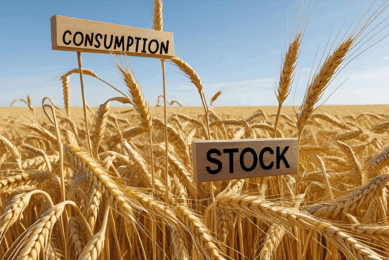Low harvest of Aussie winter crops

The 2018/19 winter crop season will go down as one of the worst in eastern Australia’s history, according to Rabobank analysts.
The harvest in the whole of Australia is expected to be 29.3 million tonnes, down 23% year-on-year (YOY) and 31% below the 5-year average. Little rain and damaging frost resulted in no harvest in the vast regions of the east coast, and where there is a harvest, yields will be anywhere between 30% and 50% down on average. All regions have been affected. An exception is the west coast, where winter crop production 2018/19 is expected to be 3% higher YOY, reaching 15 million tonnes.
Low stocks, high prices
Rabobank expects that due to the low harvests, an extended period of elevated livestock feed demand arises. Australian grain stocks are severely diminished and the east coast grain balance sheet is running on empty. As a result of the low stocks, Australian grain prices have moved higher. Record price highs for cereals and canola have been reached at all major ports, driven by this local supply deficit, and are at record basis levels over international prices. These higher prices, expected to hold well into 2019, will offset lower yields for some growers, though for many with greater reduced yield prospects, or no prospects, these higher prices will deliver little solace.
Lower export volumes
The low supply and high local demand will also have an effect on export. Rabobank expects wheat exports of 8.6 million tonnes, barley of 3 million tonnes and canola of just 1.5 million tonnes (down 52%, 57% and 45% respectively). The total grain exports are forecast to be 13.9 million tonnes, down 51% YOY and 54% below the 5-year average. At the same time, there is still relatively abundant volumes of Black Sea origin wheat, and expectations of record availability from Argentina will severely pressure Australia’s market share in South-East Asia.
2019 outlook
For the coming year (2019), Rabobank expects that wheat prices remain in the higher range of US$ 500-550 per bushel over the next 12 months. Some softening of the prices is however expected in Q2 2019 as an expanded Northern Hemisphere wheat harvest becomes apparent.
Source: Rabobank











